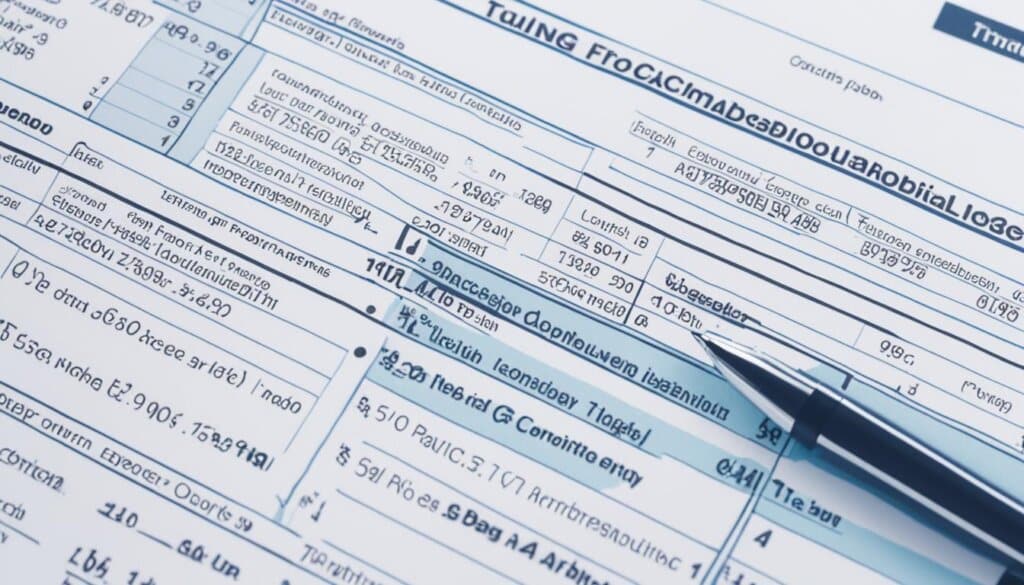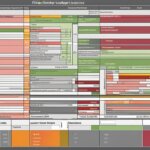Table of Contents
A general ledger, often referred to as a GL, is an accounting record that tracks all financial transactions in a business. It includes debits and credits across various areas such as revenue, expenses, assets, and liabilities. The GL is used to produce important financial statements like the income statement and balance sheet, which provide insights into a business’s financial health. It is crucial for businesses to maintain a well-organized general ledger for transparency, accountability, and effective financial management.
A general ledger plays a fundamental role within accounting systems, as it captures and records the details of every financial transaction. By tracking and categorizing these transactions, businesses can gain a comprehensive view of their financial activities and make informed decisions.
Whether it’s tracking customer payments, reconciling bank statements, or recording expenses, a general ledger serves as a central repository for financial data. It allows for accurate reporting, analysis, and interpretation of a company’s financial performance.
Stay tuned to learn more about the different sections of a general ledger and why it is essential for businesses of all sizes.
What is a General Ledger?
A general ledger is an essential component of a business’s accounting system. It serves as a central repository for recording and tracking all financial transactions that occur within the organization. This vital financial tool captures vital information such as debits and credits across various categories, including revenue, expenses, assets, and liabilities.
Within the general ledger, specific accounts play crucial roles in maintaining accurate financial records. These include accounts receivable, accounts payable, and owner’s equity accounts, among others. Accounts receivable track the amounts owed to the business by its customers, while accounts payable monitor the company’s outstanding debts to suppliers and creditors. Owner’s equity accounts record the owner’s investment in the business and any retained earnings.
By diligently maintaining a comprehensive general ledger, businesses can generate critical financial statements like the income statement and balance sheet. These statements provide valuable insights into the company’s financial health and performance, enabling informed decision-making and effective financial management.
The Five Main General Ledger Sections
The general ledger consists of five main sections that provide a comprehensive overview of a business’s financial transactions. These sections include assets, liabilities, equity, revenue, and expenses. Let’s explore each section in detail:
1. Assets
The assets section of the general ledger encompasses everything of value owned by the business. This includes cash, inventory, equipment, property, and investments. Assets are essential for the operations and growth of a business, and they are typically classified into different categories such as current assets, fixed assets, and intangible assets.
2. Liabilities
The liabilities section of the general ledger includes debts and obligations owed by the business. This can include loans, credit card balances, unpaid invoices, and other financial obligations. Liabilities represent the amount of money that the business owes to external parties and are classified into current liabilities and long-term liabilities.
3. Equity
Equity represents the owner’s interest or ownership stake in the business. It is the residual interest in the assets of the entity after deducting liabilities. Equity accounts include capital contributed by the business owner and retained earnings accumulated over time. Equity is the measure of the business’s net worth and can be positive or negative.
4. Revenue
The revenue section of the general ledger tracks the income generated by the business. It includes all the sales, fees, and other sources of revenue that the business earns from its operations. Revenue accounts can vary depending on the nature of the business and can include sales revenue, service revenue, rental income, and more.
5. Expenses
The expenses section of the general ledger records the costs incurred to operate the business. This includes expenses such as rent, utilities, salaries, advertising, supplies, and other costs necessary for the day-to-day operations of the business. Expenses are deducted from revenue to determine the net income or loss of the business.
Having a clear understanding of these general ledger sections is crucial for businesses to accurately record and track their financial transactions. By maintaining a well-organized and detailed general ledger, businesses can gain valuable insights into their financial health and make informed decisions to drive success.
| Section | Description |
|---|---|
| Assets | Includes everything of value owned by the business. |
| Liabilities | Includes debts and obligations owed by the business. |
| Equity | Represents the owner’s interest or ownership stake in the business. |
| Revenue | Tracks the income generated by the business. |
| Expenses | Records the costs incurred to operate the business. |
The Importance of General Ledgers
General ledgers play a vital role in the financial management of businesses. They serve as a centralized record of all financial transactions, providing accurate and up-to-date information that enables businesses to create meaningful financial statements such as income statements and balance sheets.
One of the primary benefits of general ledgers is their ability to track expenses and revenue. By keeping a detailed account of all financial activities, businesses can identify areas where they may be overspending or underperforming. This valuable insight allows for informed decision-making and strategic adjustments to improve financial performance.
Another crucial aspect of general ledgers is their contribution to transparent accounting. Clear and organized financial records enable businesses to maintain transparency and accountability, both internally and externally. Stakeholders, including investors, auditors, and regulators, rely on accurate and transparent financial information to assess a business’s financial health and make informed decisions.
A well-maintained general ledger serves as the foundation for effective financial management. It provides businesses with an overview of their financial position and helps in planning and budgeting. By understanding their financial standing, businesses can make informed decisions about resource allocation, investment opportunities, and growth strategies.
Benefits of General Ledgers:
- Accurate financial statements: General ledgers provide the data needed to create accurate and reliable financial statements.
- Expense tracking: Businesses can track expenses and identify areas of inefficiency or overspending.
- Revenue analysis: General ledgers help monitor revenue streams and identify opportunities for growth.
- Transparency and accountability: Clear financial records promote transparency and ensure accountability to stakeholders.
- Effective financial management: General ledgers provide a comprehensive overview of a business’s financial position, enabling effective financial management and decision-making.
Overall, general ledgers are critical for businesses of all sizes. Their importance extends beyond tax purposes, as they serve as a valuable tool for transparent accounting, financial statement creation, and effective financial management.
| Benefits of General Ledgers |
|---|
| Accurate financial statements |
| Expense tracking |
| Revenue analysis |
| Transparency and accountability |
| Effective financial management |

General Ledger vs. Balance Sheet
When it comes to financial data analysis, two key tools play crucial roles – the general ledger and the balance sheet. While they serve different purposes, they are both essential in understanding a business’s financial position.
The general ledger (GL) acts as a parent copy of all financial transactions. It contains detailed, transaction-specific information and is primarily used internally to track and manage financial activities. The GL provides a comprehensive record of all debits and credits across various accounts, such as revenue, expenses, assets, and liabilities. It serves as a vital source for generating financial statements and aids in transparent accounting within a business.
On the other hand, the balance sheet provides a snapshot of a business’s financial health at a specific point in time. It presents a clear perspective of what the business owns (assets) and owes (liabilities), including short-term and long-term liabilities. In addition, the balance sheet reflects the equity or the owner’s stake in the company. It is an accounting tool that showcases the financial position of a business and plays a significant role in financial analysis and decision-making.
In summary, while the general ledger focuses on capturing and organizing transaction-specific data, the balance sheet presents a consolidated view of a company’s financial standing. Both these tools are indispensable in assessing a business’s financial position, enabling informed decision-making and effective financial management.
FAQ
What is a general ledger?
A general ledger is an accounting record that captures all financial transactions in a business, including debits and credits across various categories such as revenue, expenses, assets, and liabilities.
What are the main sections of a general ledger?
The main sections of a general ledger are assets, liabilities, equity, revenue, and expenses.
Why is a general ledger important for businesses?
A general ledger is crucial for businesses as it provides a centralized record of financial transactions, helps create accurate financial statements, tracks expenses and revenue, ensures transparency and accountability, and facilitates effective financial management.
What is the difference between a general ledger and a balance sheet?
While a general ledger contains detailed, transaction-specific information, a balance sheet is an accounting tool that presents a snapshot of a business’s financial health by showing its assets, liabilities, and equity at a specific point in time.












